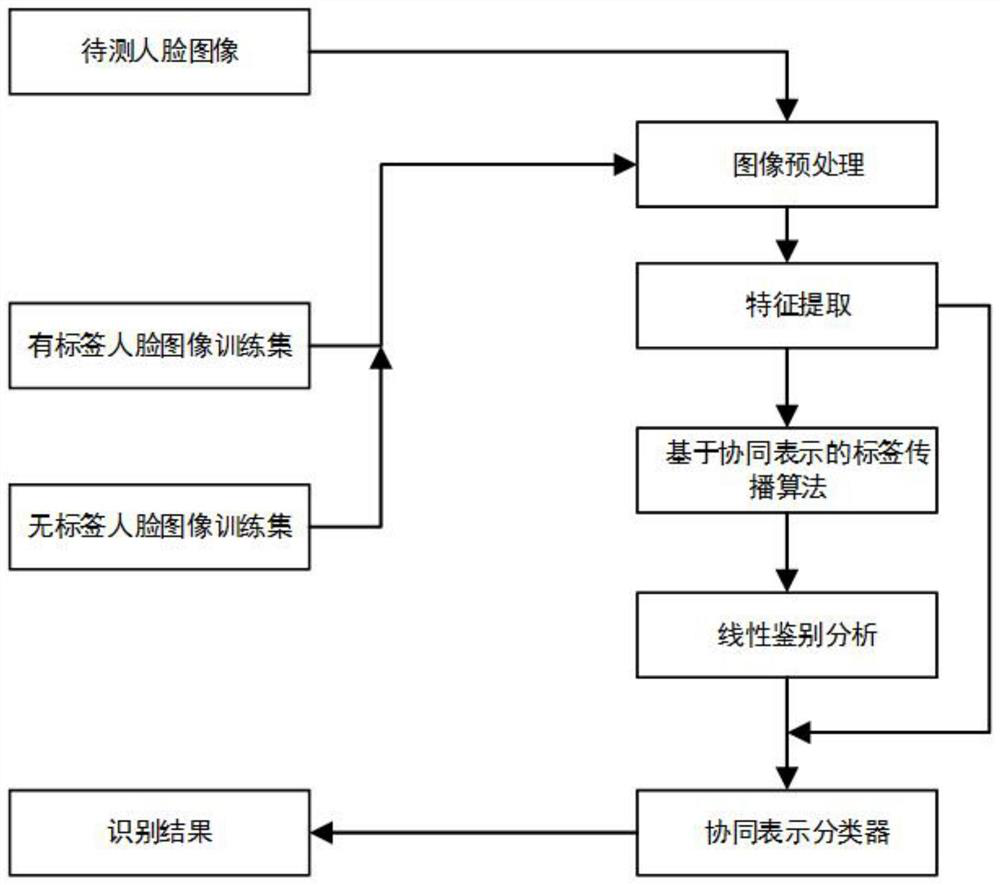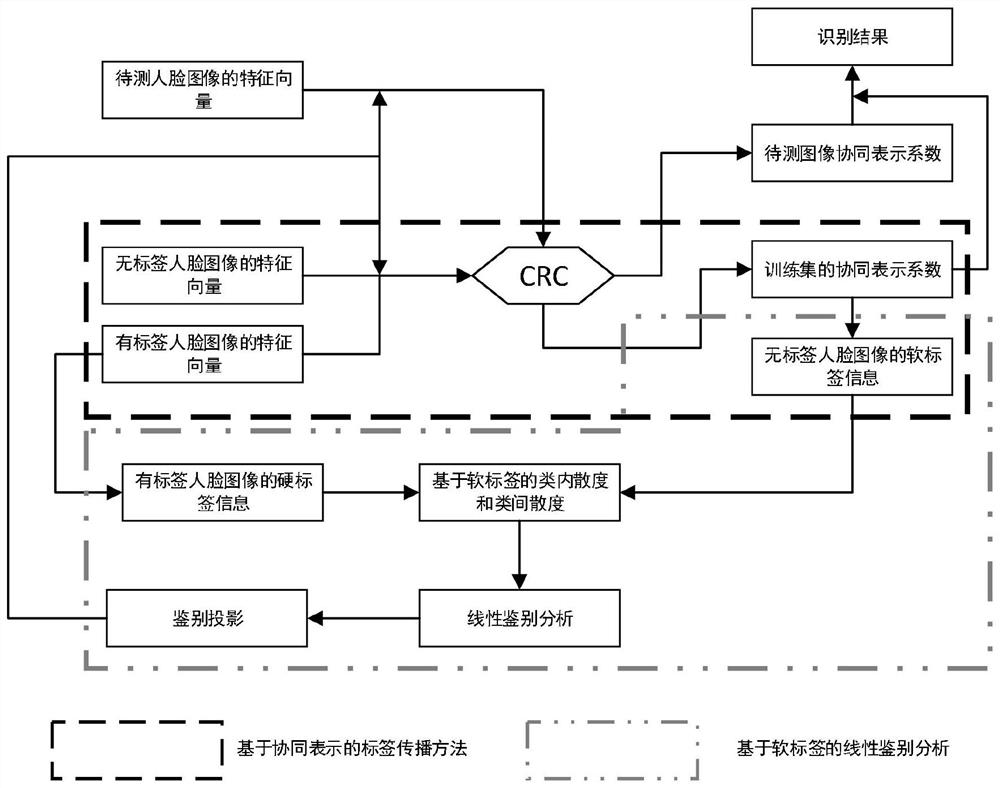Face recognition method and system
A face recognition and face labeling technology, applied in the field of face recognition, can solve problems such as weak identification ability and CRC recognition performance degradation
- Summary
- Abstract
- Description
- Claims
- Application Information
AI Technical Summary
Problems solved by technology
Method used
Image
Examples
Embodiment 1
[0046] A face recognition method is provided in an embodiment of the present invention, such as Figure 1-2 As shown, it specifically includes the following steps:
[0047] (1) extracting the feature vectors of the labeled face image training set to obtain the first set of feature vectors, and X n The category labels of are known, assuming that the category labels of n labeled face images are L={l 1 , L, l i , L, l n}, where l i is the label of the i-th sample, and l i ∈ {1, 2, L, c}, c represents the total number of categories;
[0048] (2) extract the feature vector of the unlabeled face image training set, obtain the second feature vector set,
[0049] (3) carry out the label propagation algorithm based on cooperative representation to described first feature vector set and the second feature vector set, obtain the soft label information of unlabeled face image training set;
[0050] (4) Based on the soft label information of the unlabeled face image training set...
Embodiment 2
[0075] Based on the same inventive concept as in Embodiment 1, a face recognition system is provided in the embodiment of the present invention, including:
[0076] The first feature extraction module is used to extract the feature vectors of the labeled face image training set to obtain the first feature vector set;
[0077] The second feature extraction module is used to extract the feature vector of the unlabeled face image training set to obtain the second feature vector set;
[0078] The first calculation module is used to perform a label propagation algorithm based on collaborative representation on the first feature vector set and the second feature vector set to obtain soft label information of the unlabeled face image training set;
[0079] The second calculation module is used to calculate the inter-class scatter and intra-class scatter of all face image training sets according to the soft label information of the unlabeled face image training set and the hard label ...
PUM
 Login to View More
Login to View More Abstract
Description
Claims
Application Information
 Login to View More
Login to View More - R&D Engineer
- R&D Manager
- IP Professional
- Industry Leading Data Capabilities
- Powerful AI technology
- Patent DNA Extraction
Browse by: Latest US Patents, China's latest patents, Technical Efficacy Thesaurus, Application Domain, Technology Topic, Popular Technical Reports.
© 2024 PatSnap. All rights reserved.Legal|Privacy policy|Modern Slavery Act Transparency Statement|Sitemap|About US| Contact US: help@patsnap.com









